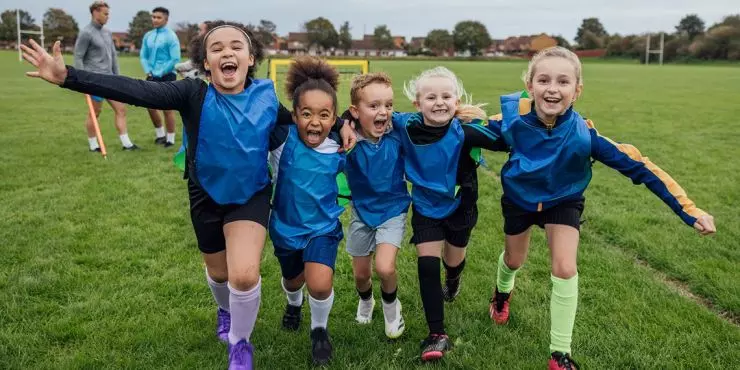
The American Academy of Family Physicians estimates that around 30 million children and adolescents will participate in youth sports each year. Whether it is at the hockey rink, basketball court, or soccer field, we have either been involved or seen our friends and family engage in youth sports. While youth sports offer many benefits, parents often have questions regarding safety, which sports should be pursued, and how to find the balance between sports and a healthy childhood. In this article we will touch on the advantages of youth sports as well as some of the common questions and concerns many parents have.
Combating Childhood Obesity
In the fight against obesity, organized youth sports might be the silver bullet we have all been searching for. They offer kids a great opportunity to maintain and/or improve their physical health. According to the CDC, childhood obesity can have both immediate and long-term effects on the social and physical health of a person. These problems include bullying, depression, joint issues, asthma, and diabetes - effects that may only show up later in life. Therefore, it's important to identify children who are obese or at risk of becoming obese, and help them adopt regular exercise routines and discuss proper nutrition. The CDC recommends that children and adolescents ages 6–17 get at least 60 minutes of moderate-to-vigorous physical activity every day. The CDC also recommends children eat a variety of fruits, vegetables, whole grains, lean proteins, and low-fat or non-fat dairy products and recommend children drink water instead of sugary drinks to help maintain a healthy weight. Learn more about childhood obesity here.
Safety in Sports
While preventing childhood obesity and obesity-related illness through organized athletics seems like a great idea, what are the safest sports to achieve this? The truth is, there is no single right answer here. Today, most organized sports available for children can be considered safe for many of them. With almost every sport, there is a risk of sustaining overuse injuries like stress fractures or pulled muscles, or mild to moderate trauma like sprains or bruises. However, such injuries typically heal without long-term complications. More severe injuries, like concussions, fractures, or ligament ruptures, are much less common.
It's been remarkable to see the recent efforts by referees, coaches, and sports associations to minimize these types of injuries. They've made attempts to make sports safer through changing rules, emphasizing appropriate sports gear and attire, and promoting safe play. Despite these efforts, injuries still occur and thus need to be considered when deciding what sports you will be allowing your child to play. We recommend discussing with your family physician to better understand both the benefits and risks linked to youth sports, assess your child’s health, and pinpoint any potential risks that could influence your decision.
As a parent, you can also take an active role in ensuring your child's safety by attending games and practices, monitoring their health and well-being, staying informed about any changes or updates in safety protocols, and communicating with coaches about any concerns or questions you may have.
Concerned about head injuries in sports? Learn more here.

The Importance of Sports
Many of us recognize youth sports as a vital aspect of our childhood. Children and adolescents often form lifelong friendships, learn about sportsmanship, develop a strong work ethic, and maintain physical and emotional health through sports. Additionally, participating in sports can foster a sense of belonging and build self-esteem.
Not only do sports benefit the individual, but they also have a positive impact on communities as a whole. Participation in youth sports has been linked to reduced crime rates, improved academic performance, and increased community engagement. Learn more about the importance of keeping your kiddos physically active.
The Role of the Family Physician
Your family physician plays a crucial role in keeping your child safe and healthy while participating in sports. They can provide valuable guidance on injury prevention, assess your child's overall health and fitness level, identify any potential risks or underlying conditions that could impact their participation in sports, and offer advice on proper nutrition and hydration for optimal performance.
In case of an injury, your family physician can also provide prompt medical attention and develop a personalized treatment plan to help your child recover quickly and safely.
At Northwest Family, we always encourage our youth patients who show interest in organized sports. We also offer sports physicals and fill out the Minnesota State High School League forms to ensure that athletes are healthy to participate in their desired sport. Book your appointment today.